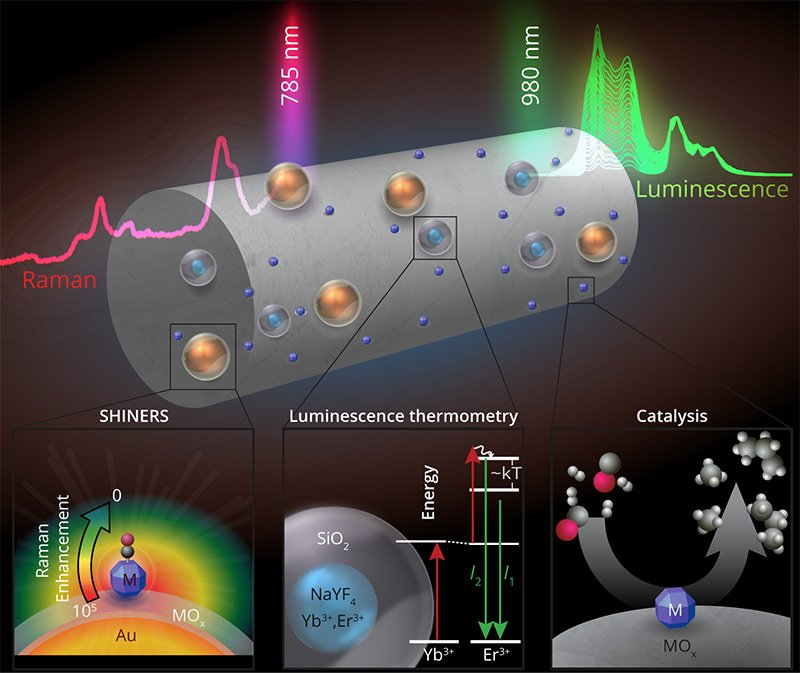Utrecht chemists develop unprecedentedly precise nanosensor for catalytic reactions
Publication in Nature Catalysis
In order to develop better and more efficient catalysts, it is important to know precisely what happens during a catalytic reaction. Chemists from Utrecht have developed a new nanosensor that provides an unprecedented level of detail regarding the local temperature and relevant chemical substances on the surface of the catalyst. The researchers immediately observed unexpected results using the new sensor, which could influence the function of the catalyst. Their results will be published in Nature Catalysis on 23 September 2019.
The new nanosensor uses a combination of luminsescence thermometrics and highly refined Raman spectroscopy to measure the temperature and the chemical substances on the surface of a catalytic material with an extremely high degree of precision. As the researchers report in the publication, this technology opens an entirely new path to measure the reactivity of a catalyst. The unexpected observations indicate that this new measurement method is essential in order to understand exactly how the catalyst works.

40-degree difference
Research leader Bert Weckhuysen: “With this technique, we can see exactly which chemical substances move to the active site of a catalyst, which ones are located at the active site, and which ones move away from it.” In the process, the researchers observed a reaction intermediary that they had not been able to identify before.
The new measurements also indicated that the local temperature on the surface of the catalyst particles during a reaction can be entirely different from the temperature setting for the reactor. Weckhuysen: “It’s as if the thermostat in the room is set for 20 degrees, but the first time you measure the temperature at your couch, it turns out to be 30 degrees.” According to the measurements using the new sensor, the temperature difference during a catalytic reaction can rise up to 40 degrees Celsius.
Publication
Operando Monitoring of Temperature and Active Species at the Single Catalyst Particle Level
Thomas Hartman, Robin G. Geitenbeek, Gareth T. Whiting, Bert M. Weckhuysen
Nature Catalysis, 23 september 2019, doi: 10.1038/s41929-019-0352-1
All authors are affiliated with Utrecht University.

